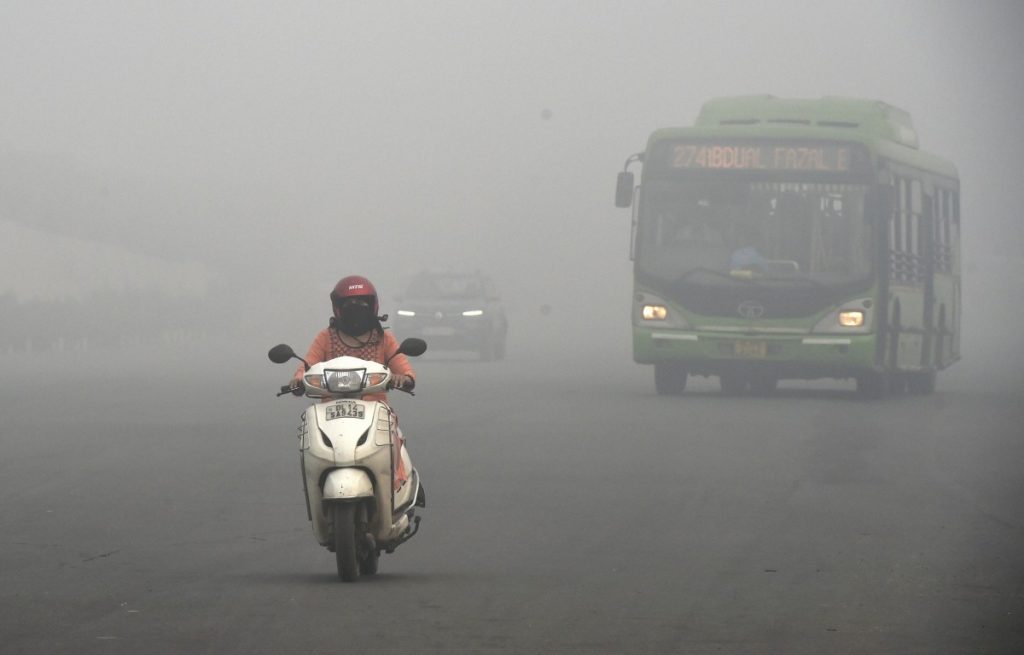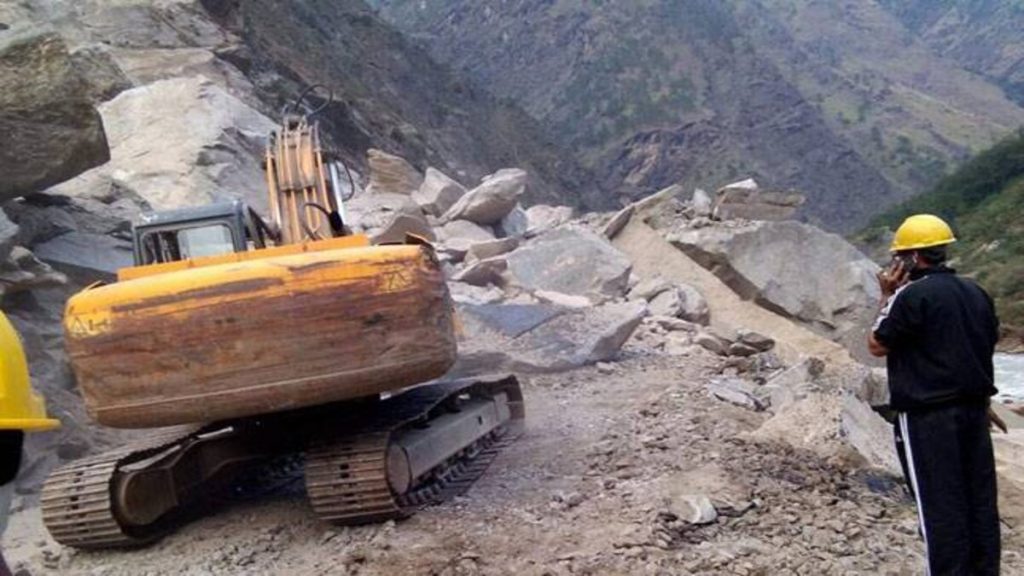Kochi:India made big promises to combat climate change on the international stage. Many environmental concerns remain at home and will re-emerge by 2021. Despite the fact that money was spent to address it, the air pollution levels at the capital did little to improve.
India also reported extreme weather events and wildfires. While paving the way for many infrastructure projects, political leaders ignored environmental concerns. Yet, the year was full of hope: People fought for their environment in many different ways. Here’s a look at the ten environmental developments that took place in India during the year.
1. India has set ambitious goals to combat climate change
Prime Minister Narendra Modi declared at the COP26 Summit in Glasgow, November, that India would achieve net zero carbon emissions by 2070. This is one of the most ambitious targets a developing nation has set for combating climate change. This means that the country has committed to capturing and sequestering equal amounts of carbon. Modi also stated that India would have a non fossil energy capacity of up 500 GW by 2030 and 50% of its energy requirements will come from renewable sources. He also stated that India will reduce its carbon emissions by one million tonnes between now and 2030. But are we ready for decarbonisation? India took a firm stand at COP26 not to phase out but to phase down coal, which energy researchers stated was necessary for India’s development paradigm.
2. Poor air quality north India
New Delhi’s air quality declined in winter months, just like every year. As usual, the primary cause was stubble burning. The primary cause of pollution in October and Nov this year was 30-40% of the pollution from crop burning in Punjab and Haryana. This is despite the fact that the government has spent Rs 2,249 crore on four years to provide several measures to stop farmers from burning their crop residue. A report by a Swiss organization found that New Delhi was the most polluted capital in the world for the third consecutive year in 2020 based on concentrations of PM2.5 particles. Poor air quality did not just affect the national capital region. Uttar Pradesh was also affected.The Wire Sciencereported. The pollution is so severe that Lucknow, the state capital, could lose 10.3 years on average of their life expectancy if it continues.

Vehicles are seen moving in poor visibility due to thick smog. This was Friday, Nov. 5, 2021, after Diwali celebrations. Photo by PTI
3. People fought for the environment
It was the year to fight for environmental rights, livelihoods and environmental issues. Members of tribal communities marched 300km in September in Chhattisgarh to draw attention to the government’s decision to open up more of the Hasdeo Aranya, a dense forest tract that is essential for survival and livelihoods. Yet, the Union and the state governments allowed mining to continue in the area. People in Goa have been questioning the purpose of three development projects that would require the cutting down of more than 40,000 trees in two state protected areas.
4.The Andaman Islands and Nicobar Islands are being developed
Throughout the year, the NITI Aayogs plan for the Andaman & Nicobar Islands has been a constant worry for conservationists and activists. Its 75,000-crore rupee vision includes the development of a transshipment port with a greenfield international runway, townships, as well as solar and gas-based power stations in the islands. Sociologists believe this will have a negative impact on the Shompen and Nicobarese peoples. In August, the Union cabinet approved a outlay of Rs 11,040 million to fund a proposal for expanding palm-oil production, with a focus on the Andaman Islands. Experts warn that this could quickly lead to a disaster for the fragile ecology in the region.
5. Wildfires in Odisha & Mizoram
April saw Mizoram experience one of its worst forest fires. The wildfire was first discovered in Lunglei, Mizoram. It quickly spread to 10 other districts in the state. Preliminary reports only from six districts affectedIt was revealed thatThe fire had already destroyed 5,700 acres worth of forests. Odishas Similipal Biosphere reserve also reported a large fire in March. The state government appointed a task force to confirm that the fire had reached 26 of the 30 districts.
6. Extreme weather
Another year of extreme weather events in the country was had. A rareRock and Ice AvalancheIn February, flash floods erupted in Uttarakhand. More than 200 people were killed or missing. In Uttarakhand, October saw uncharacteristically heavy rains and subsequent landlides.More than 50 lives. Floods in western Maharashtra claimed more then 250 lives and decimated large areas of standing crops. India actually reported two of these.Top 10The most costly extreme events in the world were Cyclones Tauktae and Yaas. They both struck the west coast and left more than 1.5 million people homeless in eastern India. They combined caused losses of around Rs 33,472 crore across four countries. A flagshipUN climate report said that India should be prepared for more such events in the future.
7. Despite the obvious environmental concern, there are several mega-projects that have been approved
Many mega projects that have obvious environmental concerns are currently in the planning stages, thanks to approvals they received back in 2021. The Supreme Court in December argued for national security to dismiss environmental concerns about the controversial 825-km Char Dham highway project expansion in Uttarakhand. However, the judgement didn’t address either environmental or defense needs and is counterproductive to both.The Wire Sciencereported. The Union environment ministry misrepresented facts to push for seven hydropower plants, including the 1000-MW Tehri II Dam in Uttarakhand.

Mountainsides were blasted and cleared to make room for the Char Dham highway. Photo: PTI/File
8. India’s first river interlinking project was initiated by the government
The long-standing KenBetwa river-interlinking proposal was officially approved by the Union cabinet in Dec. The project will take eight years to complete, with an estimated cost of Rs 44 605 crore. It will require the construction of a dam as well as a channel to carry water from the Betwa to the Ken rivers in the Bundelkhand area of Uttar Pradesh and Madhya Pradesh. This is intended to irrigate agricultural areas and supply drinking water for the Bundelkhand area. However, activists raised questions about the consequences such as the submergence and misinterlinking of rivers.
9. Amendments, amendments & more amendments
The amendments to several biodiversity and environmental laws were made by the environment ministry throughout the year. Many of these will reduce existing safeguards to different levels. When the year began, the draft Environment Impact Assessment notification 2020 was already well-known. Between 2011 and May 2021 the Centre modified it more than 335 times.The WireReported, and diluted, environmental protections in effect for most industrial and infrastructural project to obtain prior environmental clearance.
The ministry asked for two expressions of interest in April and June to shortlist consulting organisations that could draft comprehensive amendments the Indian Forest Act 1927. The proposed amendment to the Forest (Conservation) Act 80, which was suggested in July, could allow for ecotourism to flourish unassisted in forest lands. The ministry proposed changes to the Biological Diversity act 2002. This would favor AYUSH practitioners and Indian companies that have a foreign share over scientists and local communities. The ministry plans to also alter the Wildlife Protection Act 1972.
10. India now has the largest network in South Asia of Ramsar sites
India now hosts the largest Ramsar network in South Asia. Five wetlands were designated by the Uttar Pradesh environment ministry as Ramsar sites, and Haryana and Gujarat each have two Ramsar sites. Ramsar sites refer to wetlands of international significance as per the Ramsar Convention on Wetlands. India is a signatory. It provides the framework and guidelines for international cooperation to conserve and sustain wetlands. Ramsar sites have strict management policies to enable this. India currently hosts 47 Ramsar Sites.

